According to projections by the United Nations, the world population has reached 7 billion and continues to grow rapidly. While more people are living longer and healthier lives, gaps are widening between the rich and the poor in some nations and tens of millions of people are vulnerable to food and water shortages. There is, of course, the issue of the impact of that sheer number on the environment, including pollution, waste disposal, use of natural resources and food production. This post focuses on wheat and the effect of our numbers on the environment. Wheat is the most important cereal in the world and along with rice and corn accounts for about 73 percent of all cereal production. It isn't surprising that 7 billion people have a lasting impact on our world's natural resources and the environment in which we live. -- Paula Nelson (36 photos total)

One of the world's breadbaskets lies in the prairies of Canada. This stalk, near Lethbridge, Alberta, helps form the foundation for the most important food product in the world: cereal grains. (Todd Korol/Reuters)

A worker carries an air filter during wheat harvest on the Stephen and Brian Vandervalk farm near Fort MacLeod, Alberta, Canada. The nation is the world's third-largest exporter of wheat, producing annually an average of over 24 million tons. Only the United States and Australia export more. (Todd Korol/Reuters)

Wheat is dumped into a grain truck for transport. The biggest importer of Canada wheat annually is often the United States, itself a major exporter. Canadian farmers have also increased exports to such nations as Iraq and Saudi Arabia. (Todd Korol/Reuters)

Combines harvest wheat on Stephen and Brian Vandervalk's farm near Fort MacLeod,, Alberta. Among grains, only rice is consumed in great quantities than wheat. (Todd Korol/Reuters)
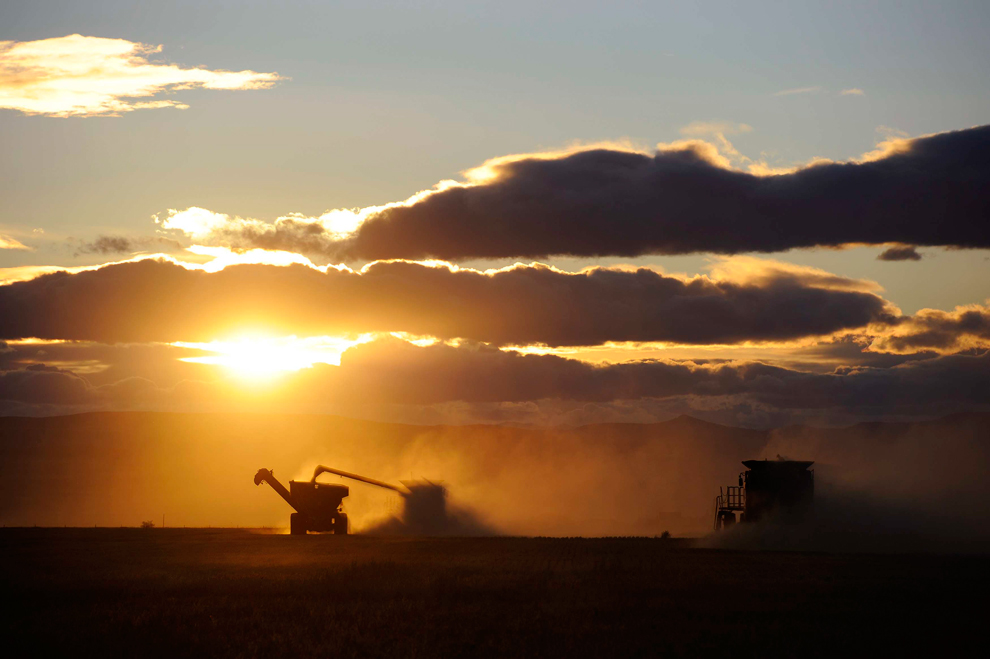
Wheat is harvested in Alberta this fall. The United Nations predicts the world's population will grow to about 9 billion by 2050. With no increase in arable land expected, a collection of private foundations, government agencies, and the United Nations are seeking ways to boost production in such crops as wheat. (Todd Korol/Reuters)

Storage bins hold tons of wheat before being sold. (Todd Korol/Reuters)

Dan Laramee walks on grain railway cars as he loads wheat from the Canadian prairies at the Pioneer grain elevator in Carseland, Alberta, on Oct. 2. (Todd Korol/Reuters)

Dan Laramee walks between grain railway cars as he loads wheat from the Canadian prairies at the Pioneer grain elevator in Alberta, Oct. 2. (Todd Korol/Reuters)
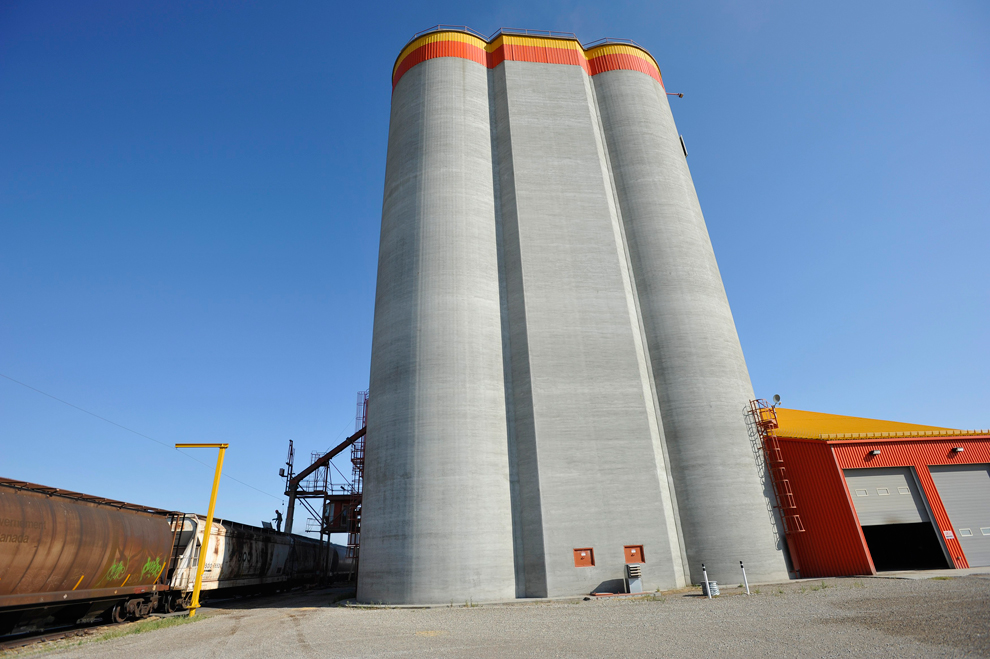
Massive grain elevators hold wheat before it is transferred onto railway cars in Carseland, Alberta. (Todd Korol/Reuters)
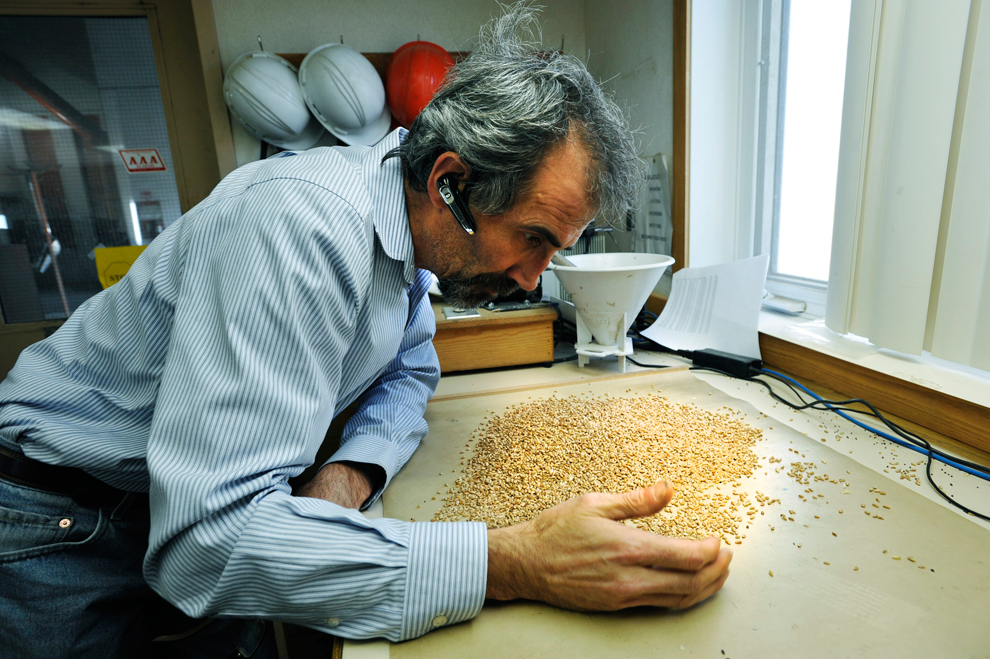
Grain inspector Jim Dolan inspects wheat from the Canadian prairies at the Pioneer grain elevator in Carseland, Alberta. For decades, the world's focus has been more on distributing food aid, including excess grains, to poor nations. Over the last few years, that focus has shifted toward better positioning poor farmers to feed themselves, according to Reuters. (Todd Korol/Reuters)
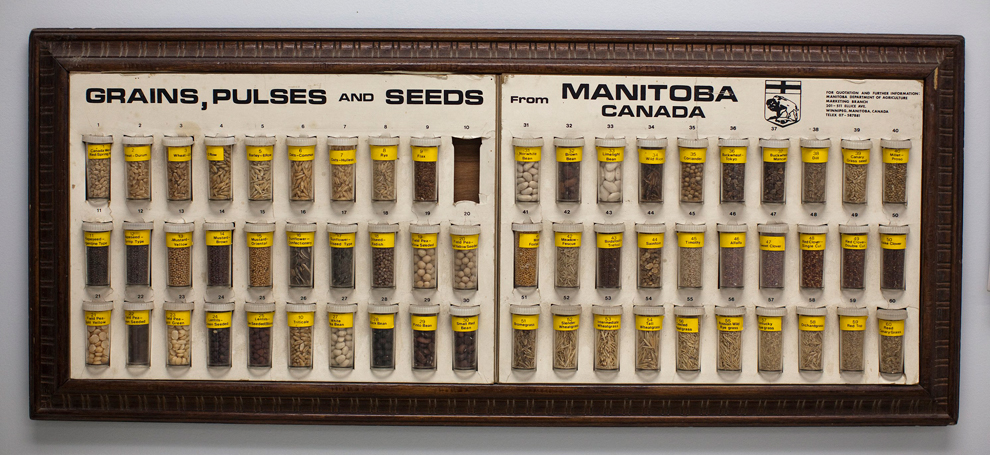
A display case in the quality control room at the Alliance Grain Terminal in Vancouver, British Columbia. With the stumbling economy hindering government efforts to boost production and distribution, such private groups as the Bill and Melinda Gates Foundation and the Rockefeller Foundation are becoming more involved in agricultural research and development. (Ben Nelms/Reuters)
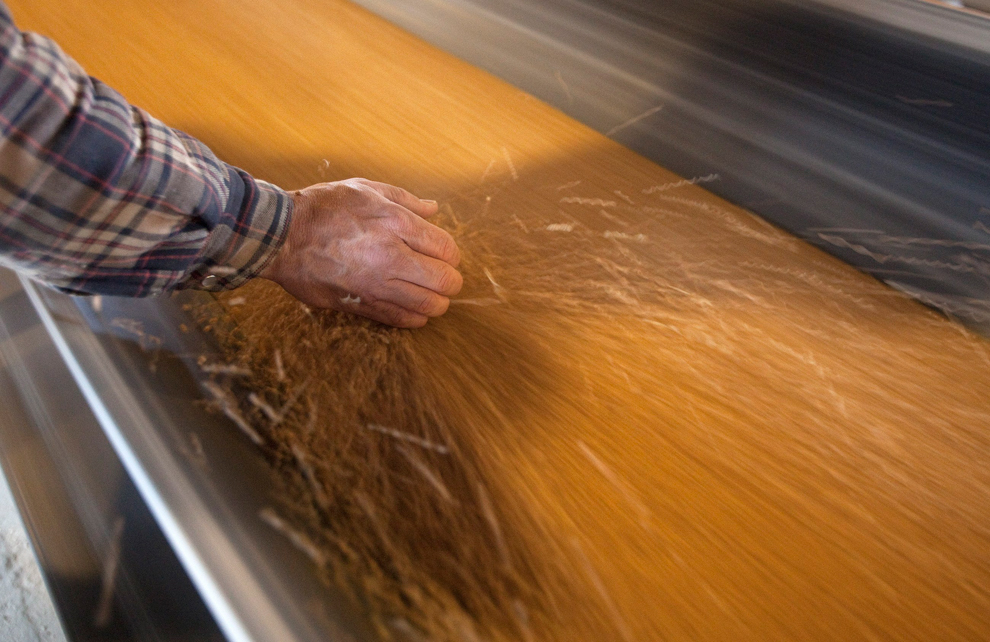
Dan Lizee, operation manager, picks up a handful of wheat off the conveyor belts that transfer the grain from trains to cargo ships at the Alliance Grain Terminal in Vancouver, British Columbia. (Ben Nelms/Reuters)
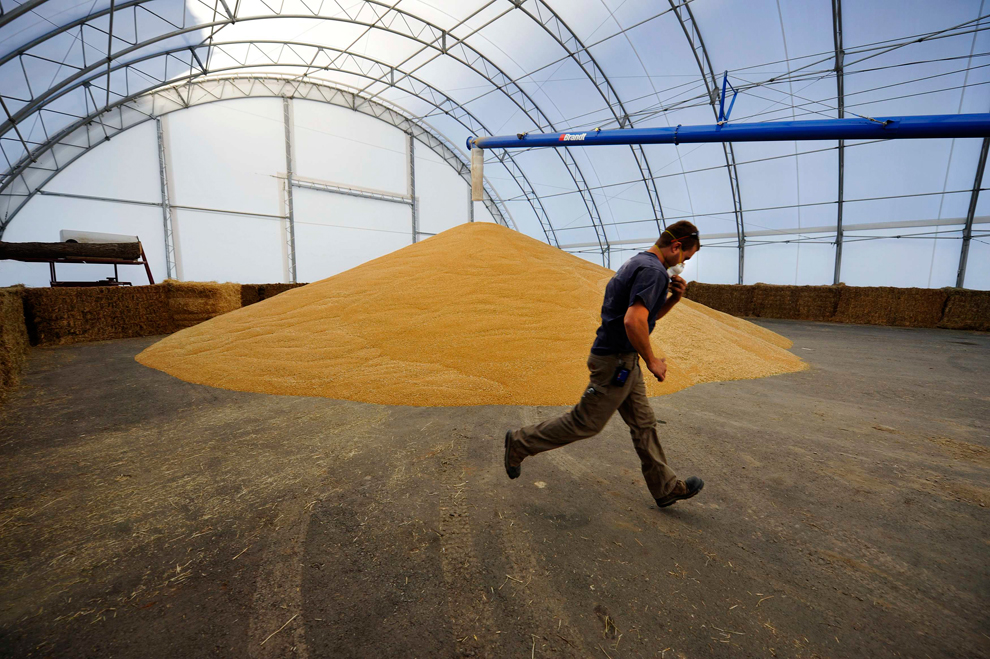
Huub Woolvrik unloads wheat at the Stephen and Brian Vandervalk farm in Alberta. Wheat is the most important cereal in the world and along with rice and corn accounts for about 73 percent of world cereal production. (Todd Korol/Reuters)
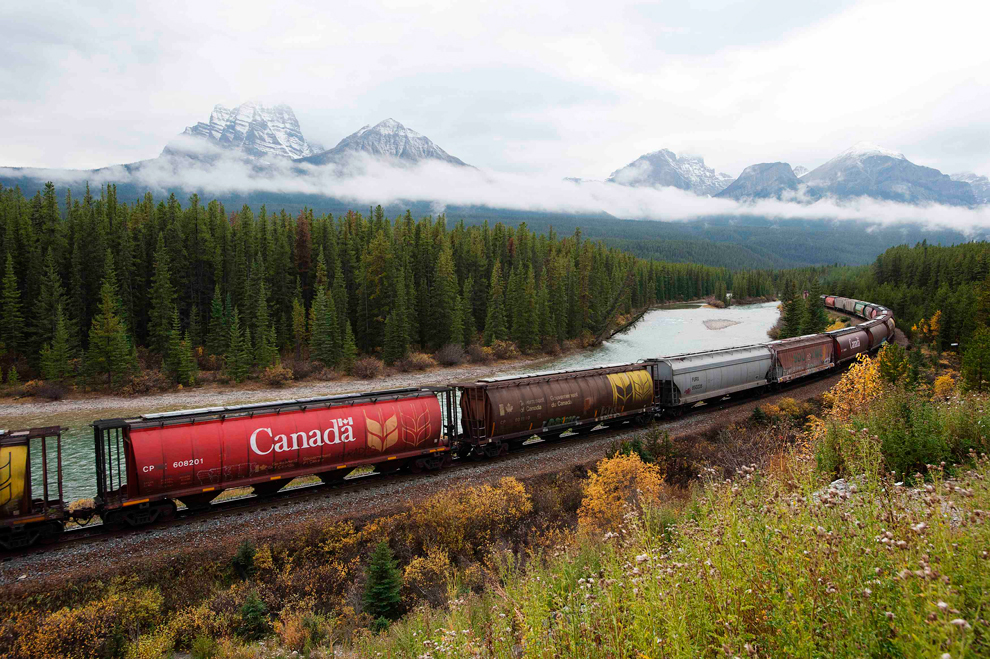
Rail cars loaded with Canadian wheat travel through the Rocky Mountains on the Canadian Pacific railway line near Banff, Alberta. (Todd Korol/Reuters)
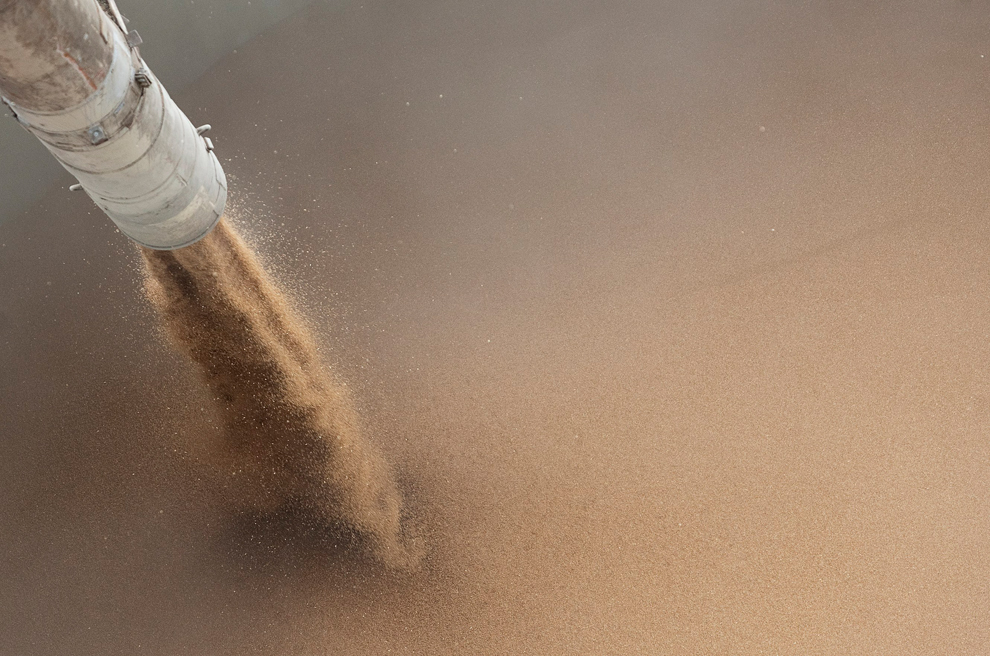
Wheat is transferred from a train to the cargo ship 'Jork' at the Alliance Grain Terminal in Vancouver, British Columbia. (Ben Nelms/Reuters)
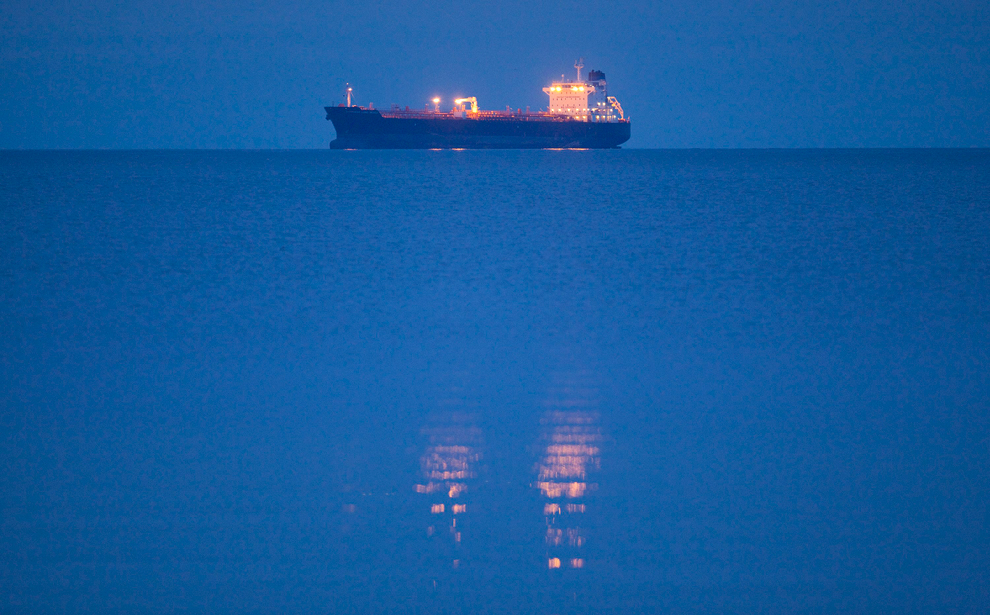
A cargo ship plies the Strait of Georgia off Vancouver, British Columbia. Grain exports from Canada and the United States are pieces of the puzzle on how the world is going to feed its growing population. "We are talking about adding 2.6 billion people between now and 2050. That is two Chinas," Robert Thompson, former director of rural development for the World Bank, told Reuters. "We have to raise productivity. I think we can do it all if we invest enough in research. But at the moment we aren't." (Ben Nelms/Reuters)
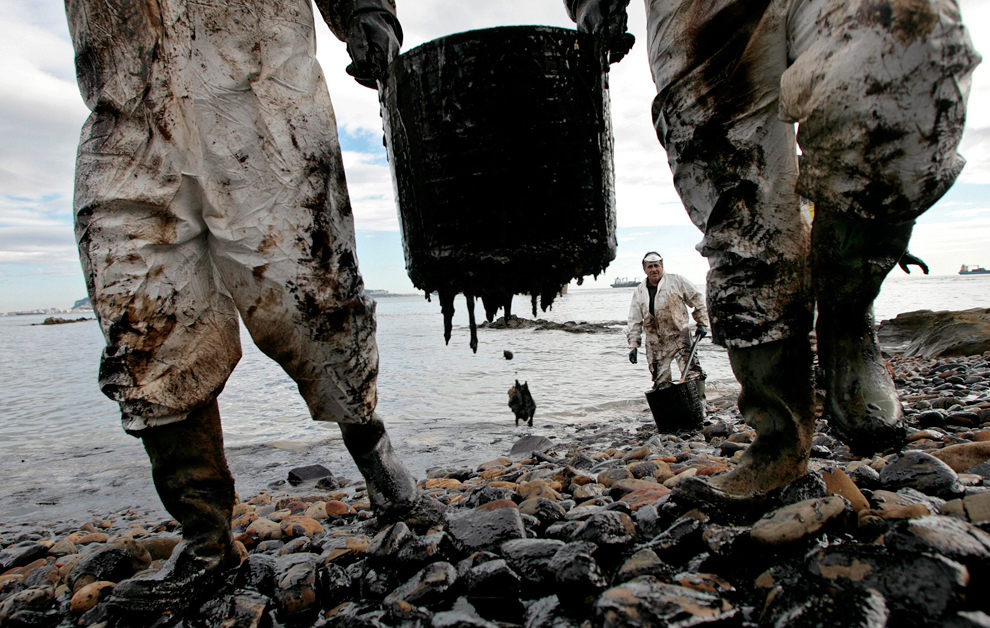
Men clean up engine fuel from a refrigerator ship that ran aground near Algeciras, southern Spain, in 2007. The environment provides trillions of dollars in benefits to the global economy, the United Nations says, yet many of these benefits are under threat from pollution. (Anton Meres/Reuters)
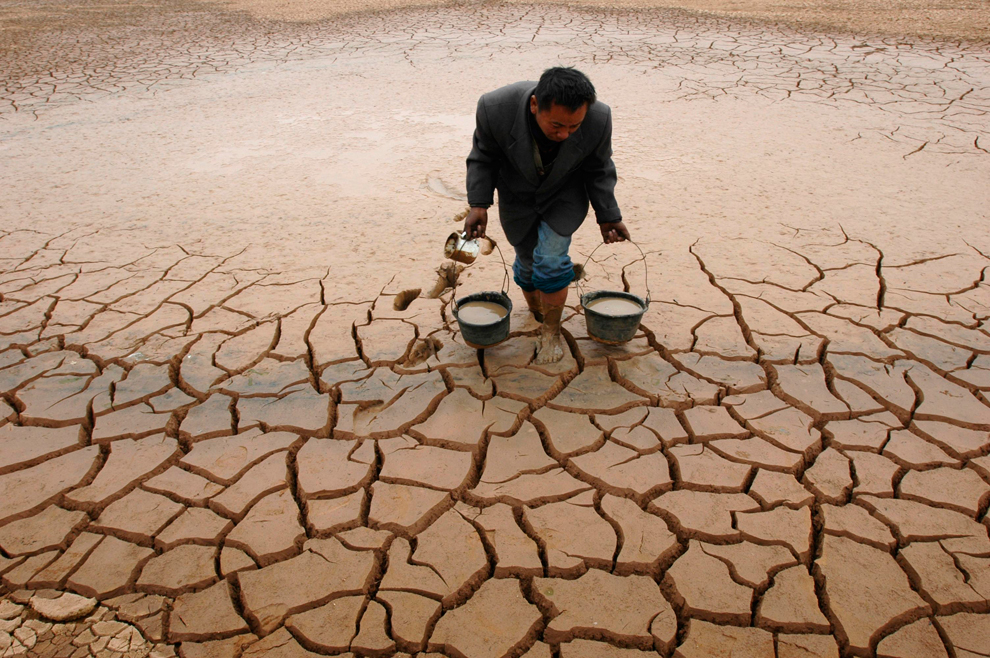
A farmer takes water from a dying pond to irrigate his vegetable field on the outskirts of Yingtan in China. (Reuters)
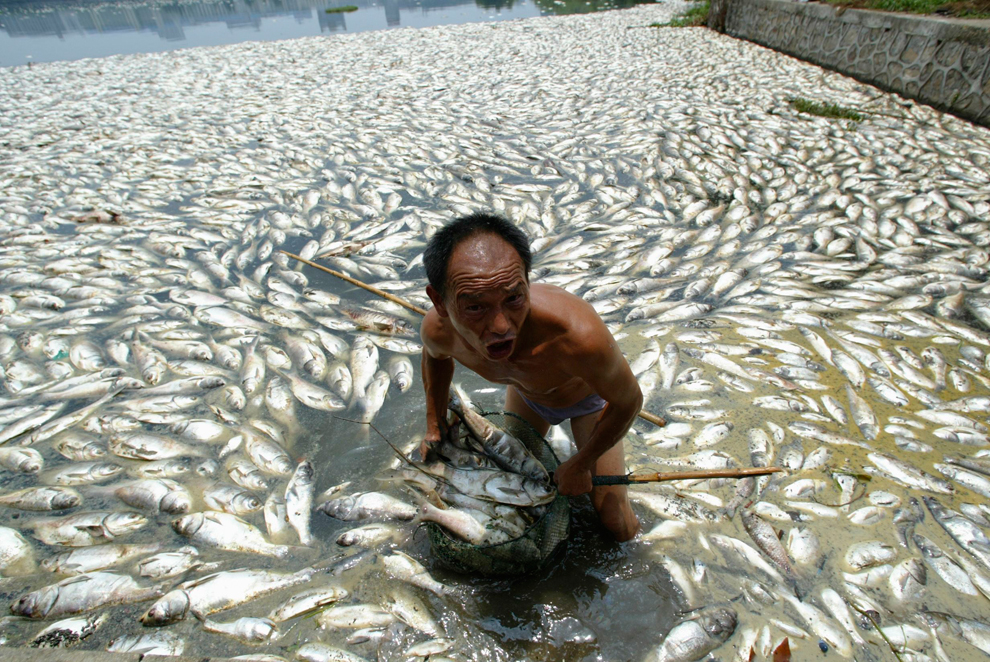
A worker removes dead fish from a lake in Wuhan, central China's Hubei province, in 2007. Mankind's immense pressure on the planet is causing the fastest extinction of species in millions of years and is rapidly heating up the planet, threatening more extreme weather, according to scientists. (Reuters)
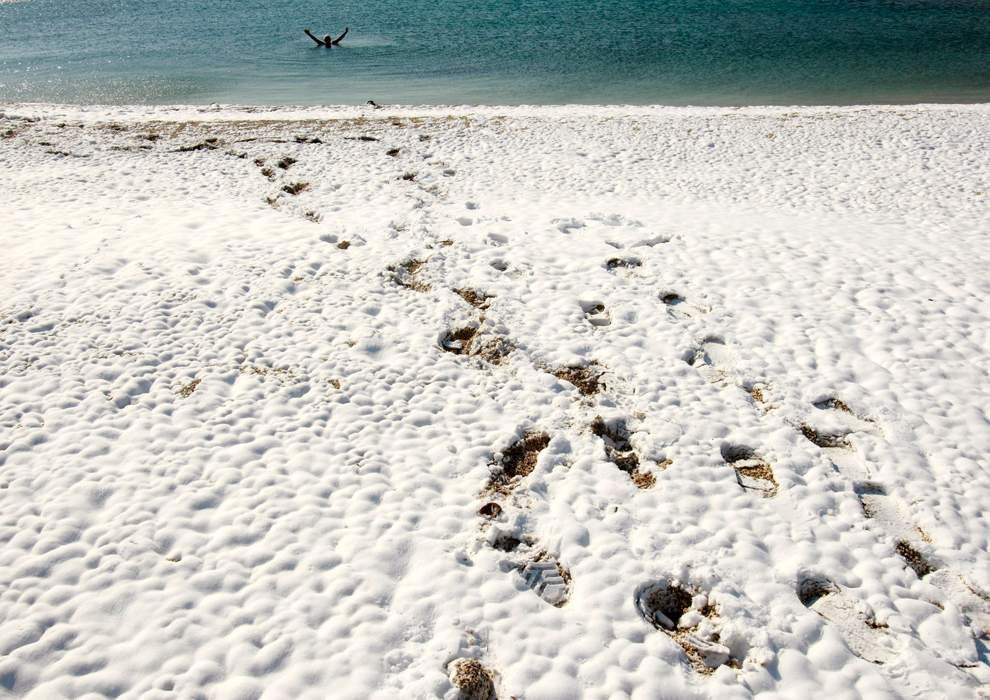
The snow and bitter waters cannot keep this swimmer from the waters near Athens in 2008. (Yiorgos Karahalis/Reuters)
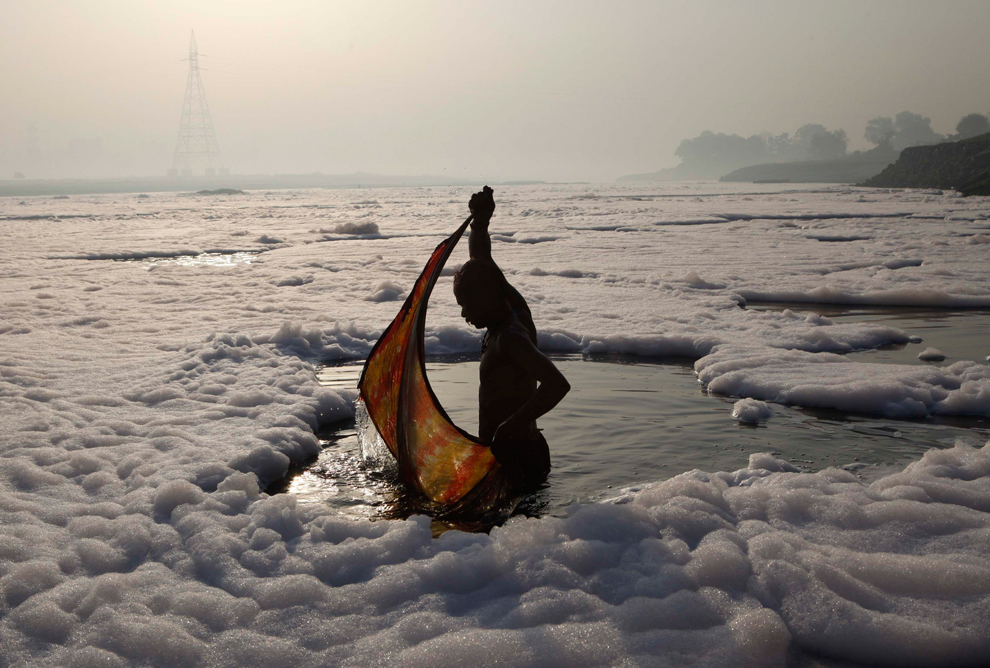
A Hindu devotee wraps a piece of clothing around himself after a ritual dip in the polluted Yamuna river in New Delhi in 2010. The United Nations warns that the problems of pollution, deforestation, and climate change are expected to worsen as the world's population climbs. (Danish Siddiqui/Reuters)
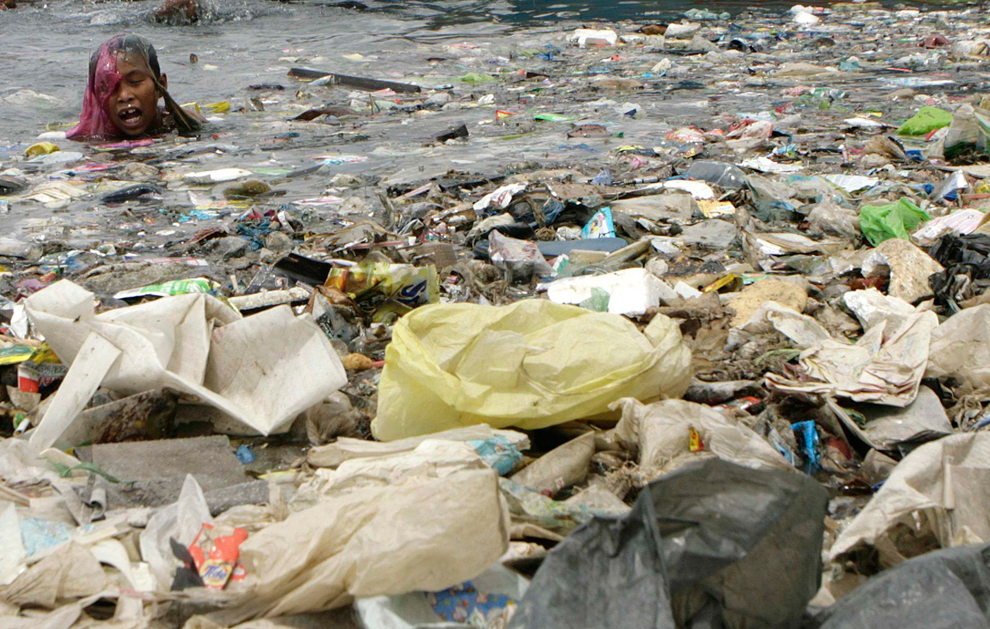
A boy swims in the polluted waters of Manila Bay in the Philippines in 2010. "Manila Bay has become a huge floating dump for the whole of metro Manila,'' said one Greenpeace worker. (Cheryl Ravelo/Reuters)

Oil is burned off the surface of the water near the source of the Deepwater Horizon spill in the Gulf of Mexico off the coast of Louisiana last summer. The US government estimates that 206 million gallons of oil were released by BP's well a mile beneath the sea. Tens of billions of dollars have been spent or committed by BP on cleaning up the devastation and compensating victims. (Lee Celano/Reuters)
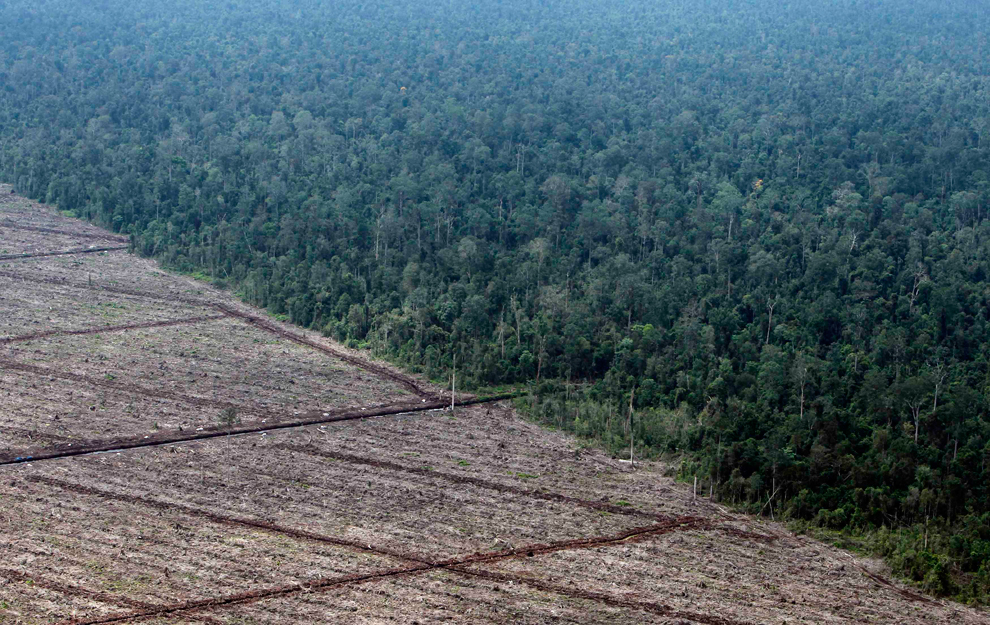
Deforestation such as found on Indonesia's Sumatra island leads to depleted resources and increased greenhouse gases, the United Nations says. (Beawiharta/Reuters)

Pigeons and dust cloud a street in Kuwait City in 2008. The world's mean temperatures continue to rise, say UN scientists. (Stephanie McGehee/Reuters)
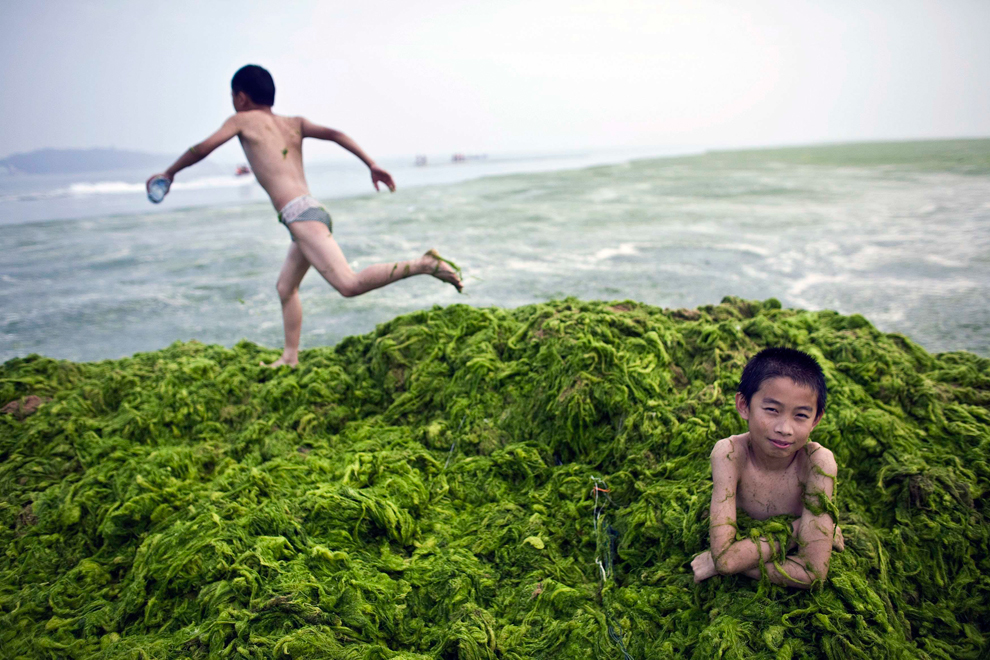
Two youths frolic at a beach in Qingdao, Shandong province, in China. The resort city has been the site of large algae blooms. (Nir Elias/Reuters)
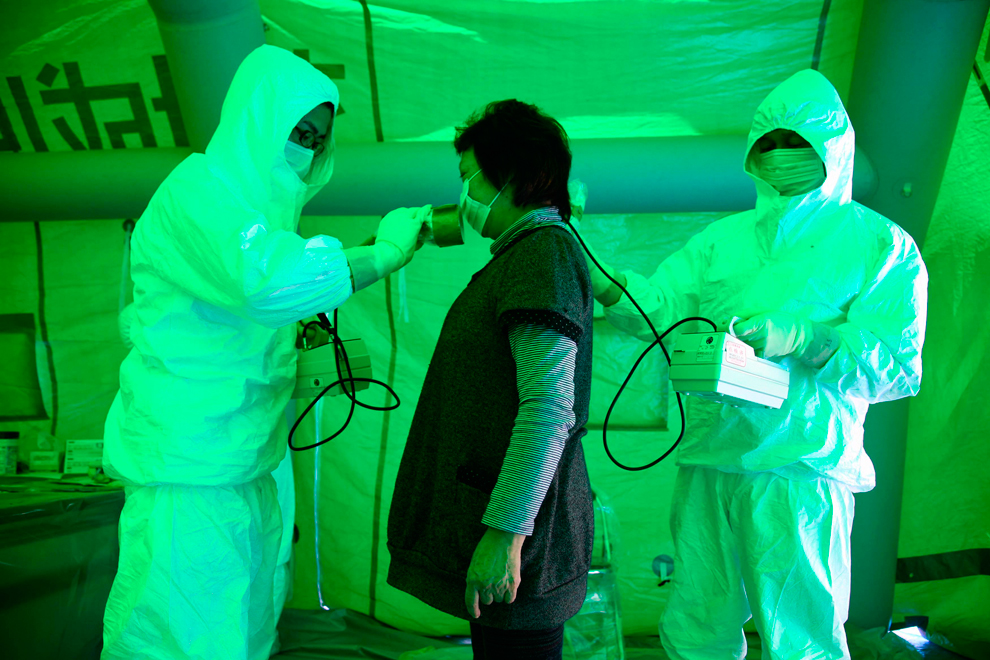
Medical workers use a Geiger counter to screen a woman for possible radiation exposure at a public welfare centre in Hitachi City, Ibaraki, March 16, 2011. Man's solutions to provide energy to the growing population, such as nuclear powered plants, can have serious consequences when systems fail.

A motorcyclist turns back due to intense heat while passing through haze near burnt peat land in Rokan Hilir, Indonesia's Riau province in 2005. (Beawiharta/Reuters)
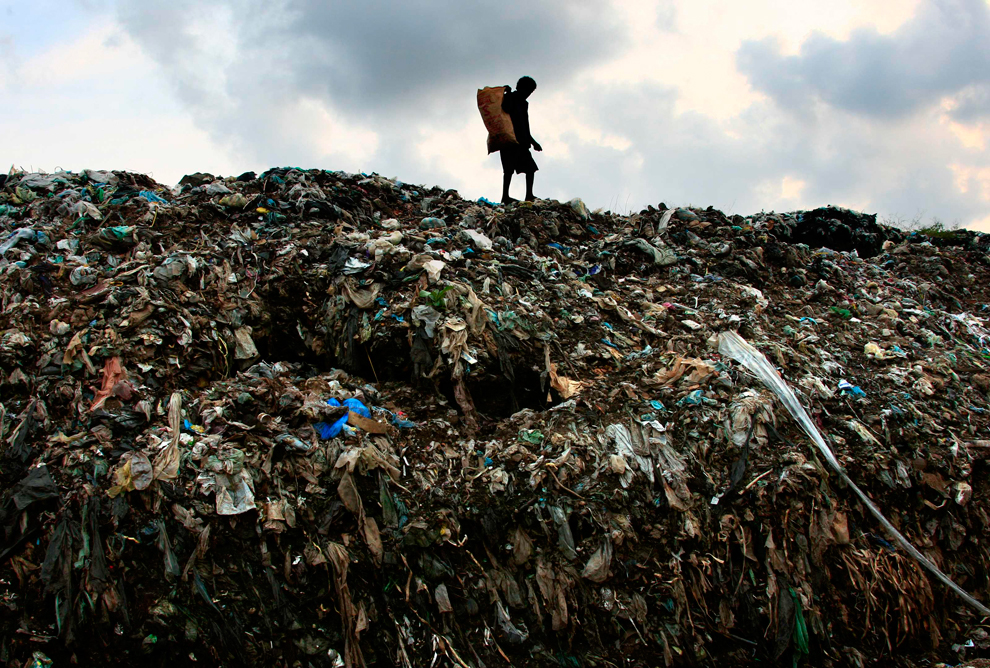
A garbage collector carries a sack as he walks atop a massive pile of garbage at the Bloemendhal dump in central Colombo in 2009. (David Gray/Reuters)
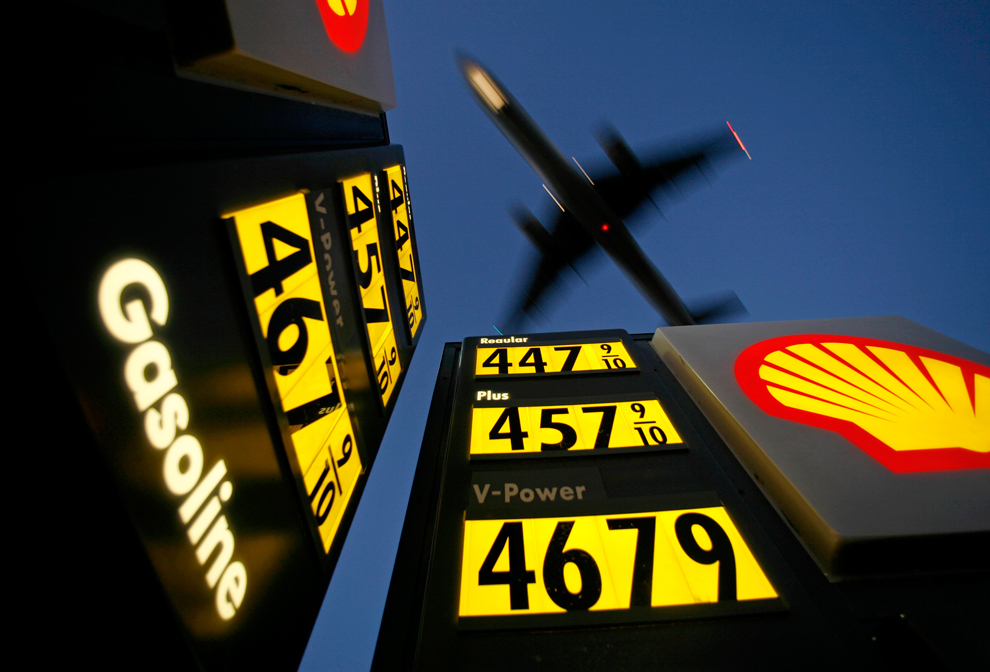
Gasoline prices at a station near Lindbergh Field as a plane approaches landing in San Diego, California, in 2008. (Mike Blake/Reuters)
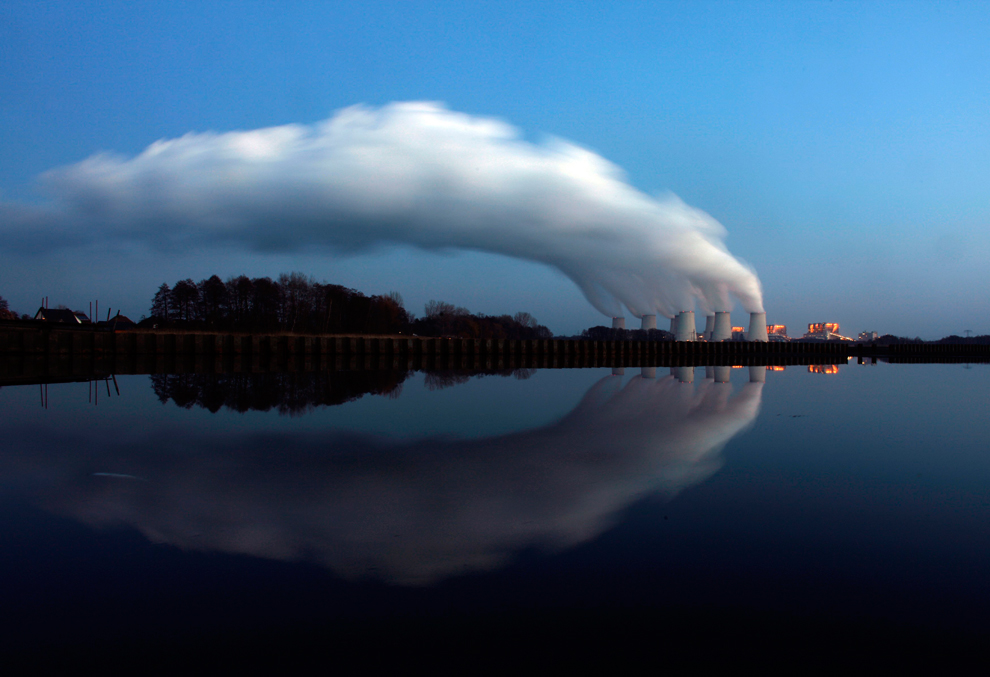
Steam billows from the cooling towers of Vattenfall's Jaenschwalde brown coal power station on a lake near Cottbus, eastern Germany in 2009. (Pawel Kopczynski/Reuters)
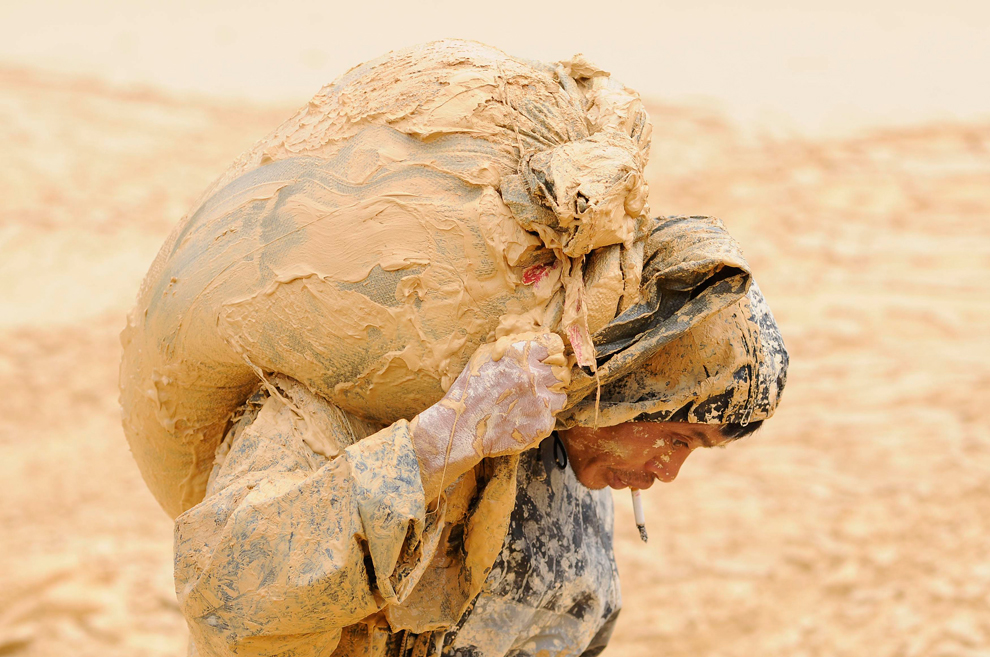
A man works at the site of a rare earth metals mine at Nancheng county, Jiangxi province in 2010. (Reuters)
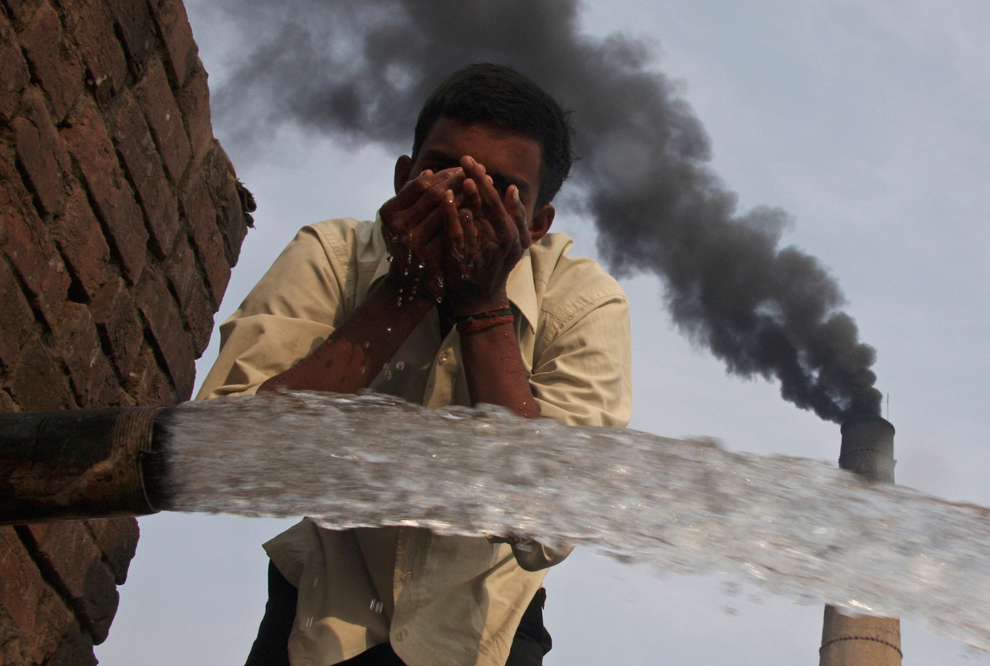
A laborer takes a break from his work at a brick factory at Togga village on the outskirts of the northern Indian city of Chandigarh in 2009. (Ajay Verma/Reuters)
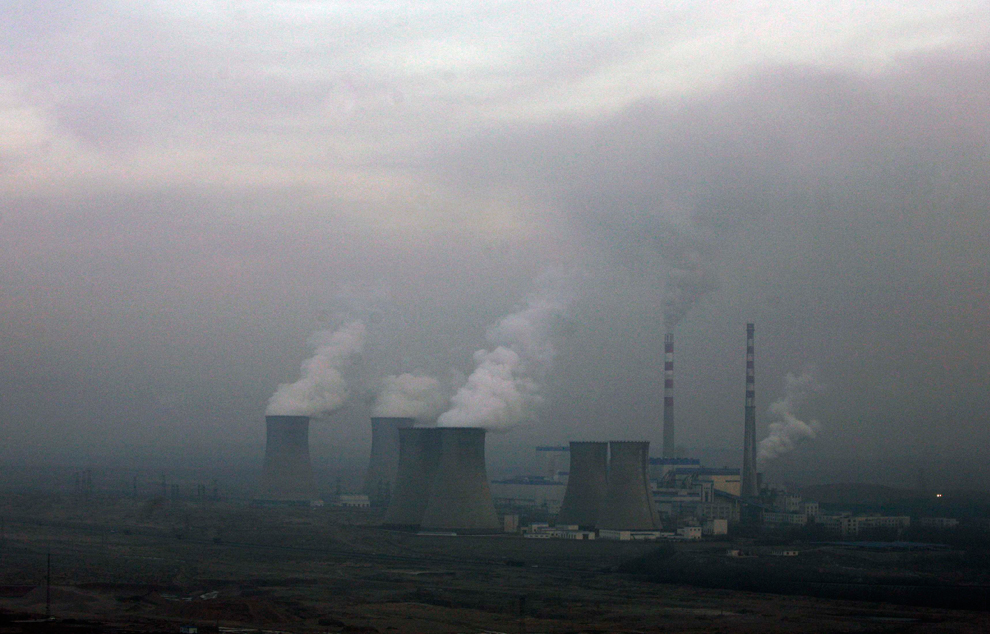
The Haibowan coal-fired power plant on the outskirts of Wuhai in China's northern Inner Mongolia region in 2009. (Jason Lee/Reuters)
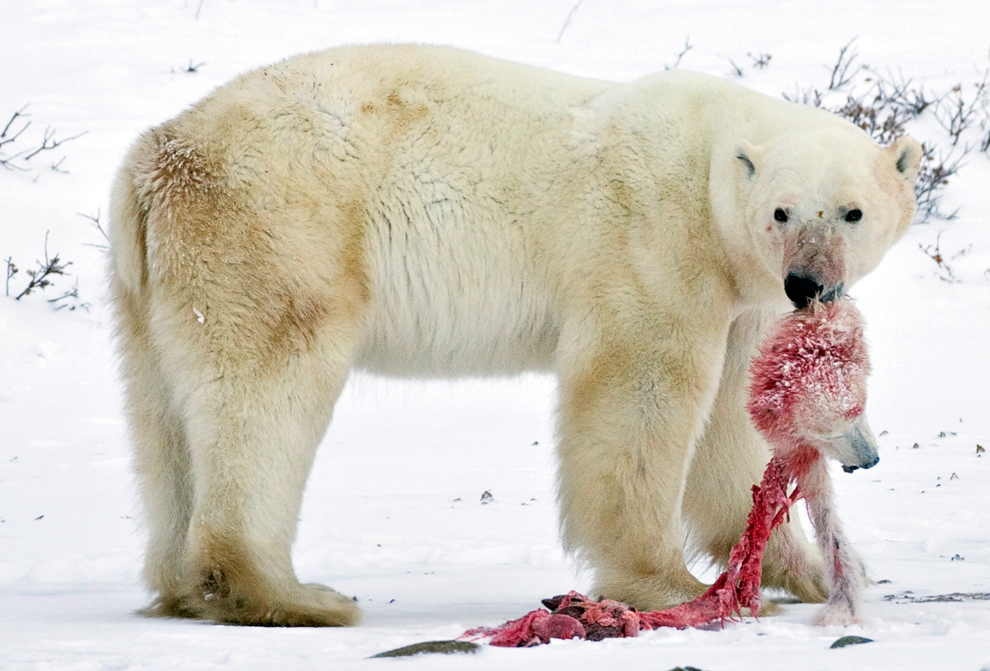
A male polar bear carries the head of a polar bear cub it killed and cannibalized in an area about 300 km (186 miles) north of the Canadian town of Churchill in 2009. Food supplies for polar bears are being affected by rising temperatures and melting ice. (Iain D. Williams/Reuters)
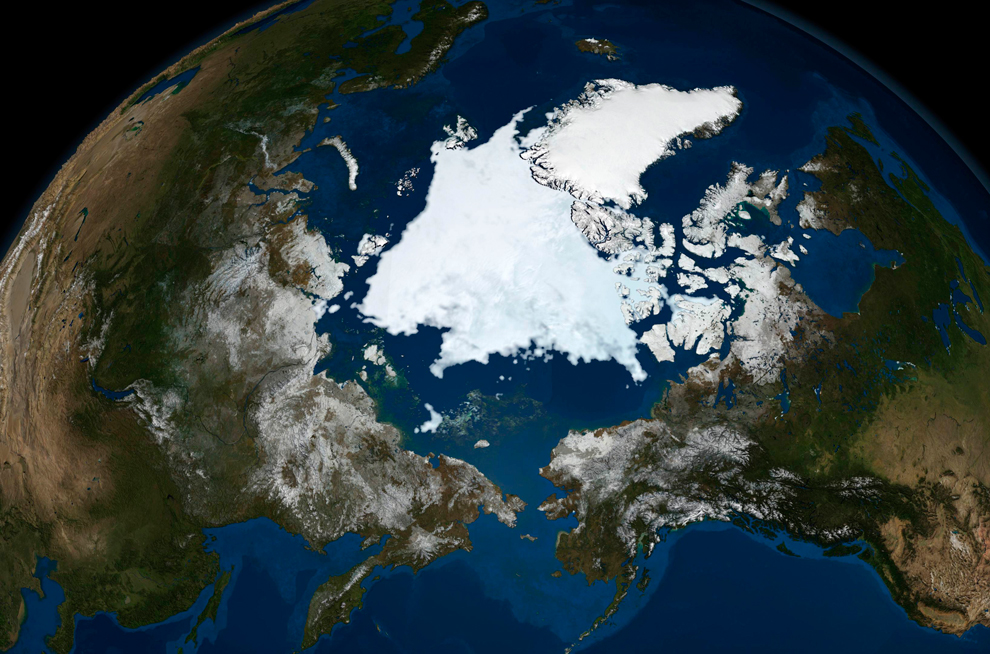
This image taken by NASA's Aqua satellite in 2008 shows the state of Arctic sea ice. Mankind's immense pressure on the planet is causing the fastest extinction of species in millions of years and is rapidly heating up the planet, threatening more extreme weather. (NASA/Goddard Space Flight Center Scientific Visualization Studio)




































No comments:
Post a Comment